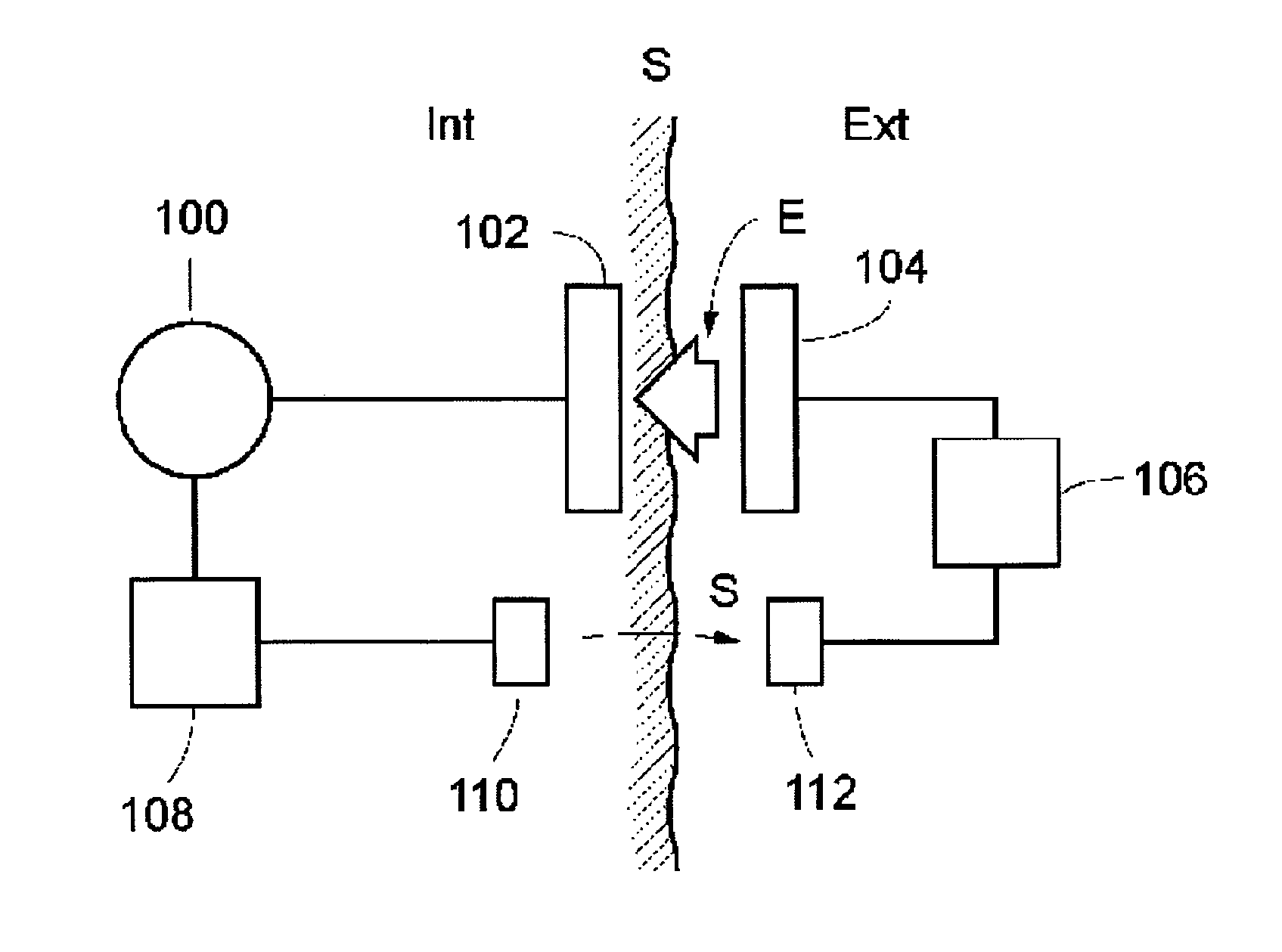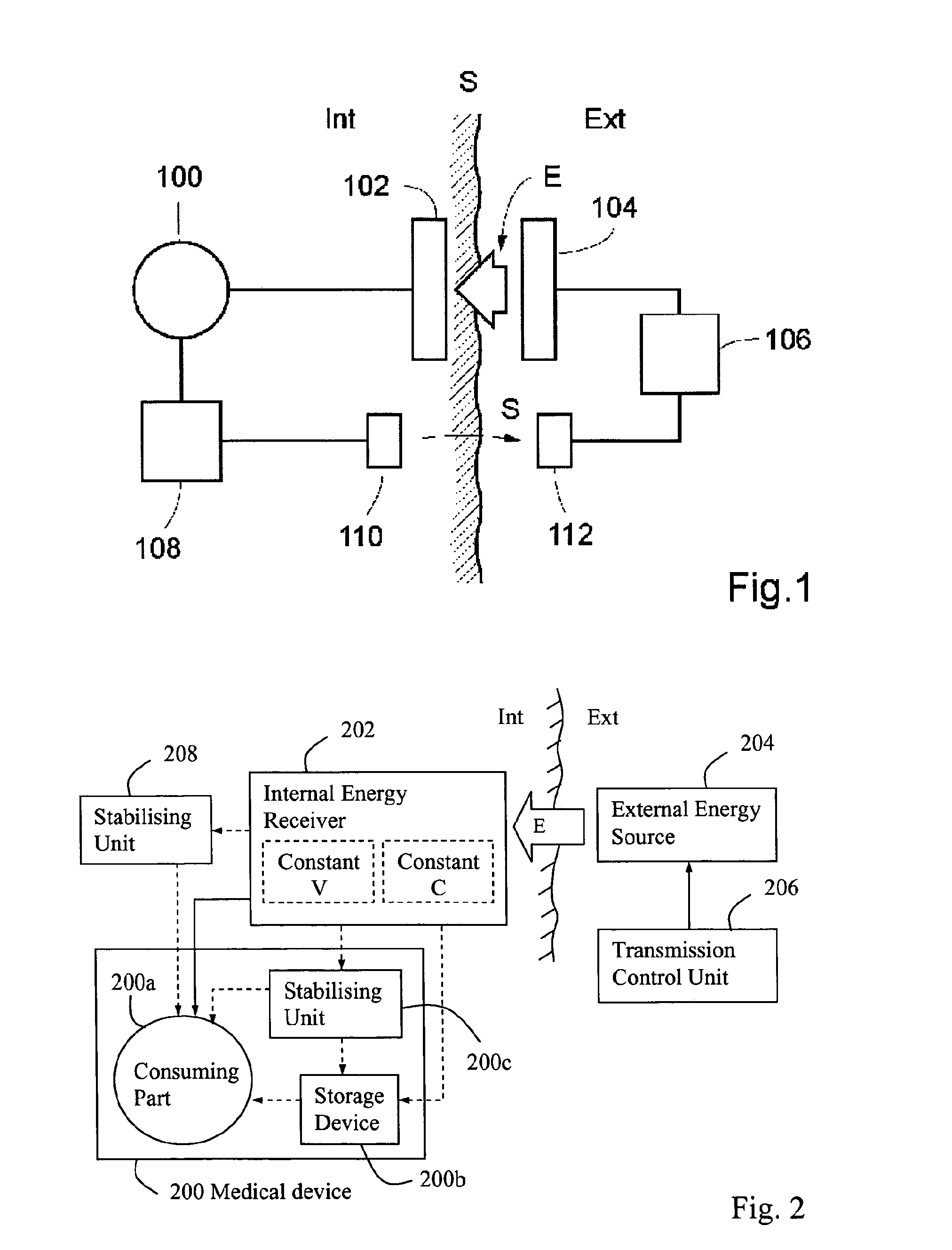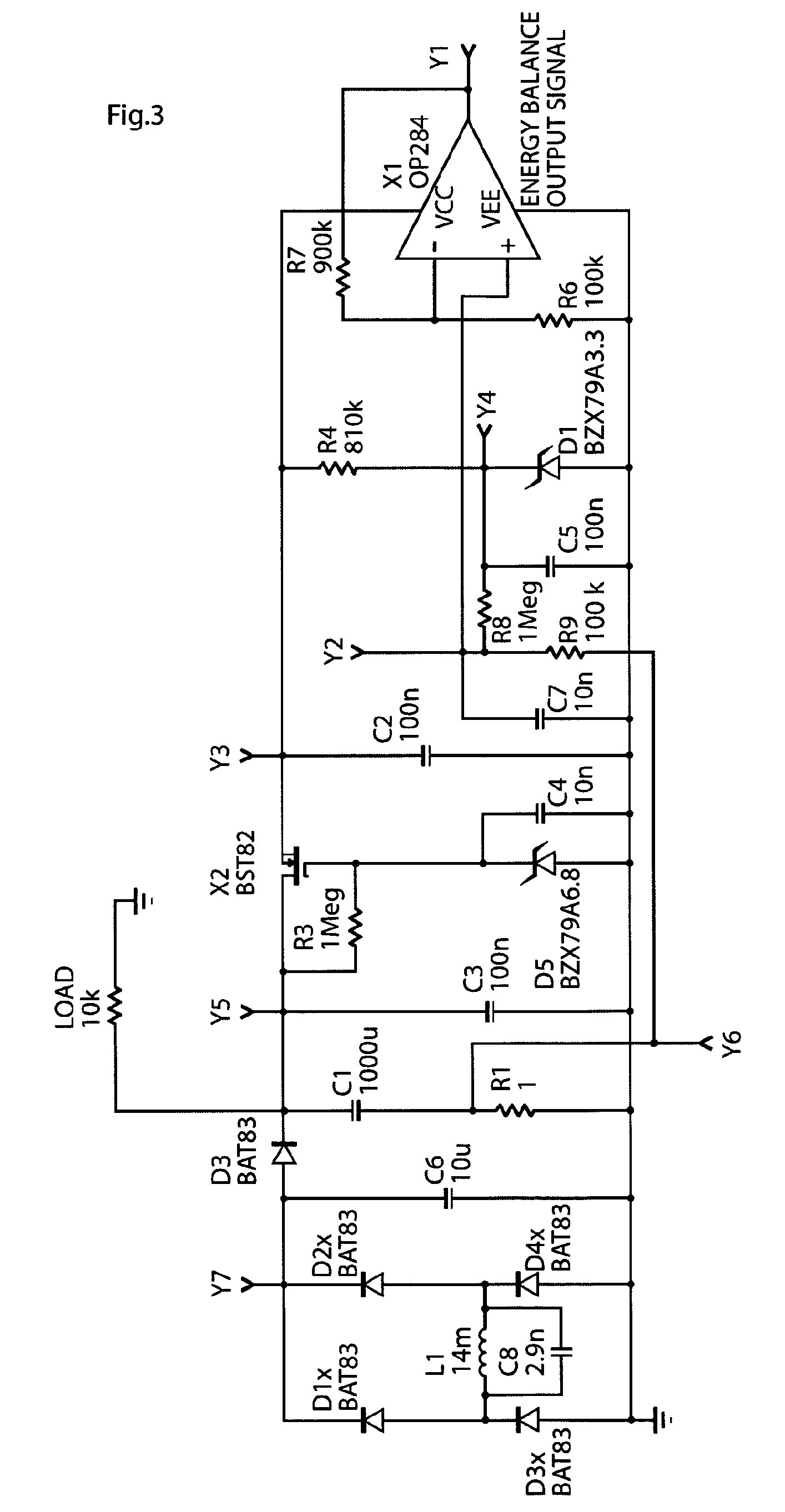Method and apparatus for supplying energy to a medical device
a technology for medical devices and wireless energy, applied in the direction of prosthesis, surgery, therapy, etc., can solve the problems of disturbing the intended medical effect of the device, affecting the efficiency of the energy transfer, and affecting the energy supply to the medical devi
- Summary
- Abstract
- Description
- Claims
- Application Information
AI Technical Summary
Benefits of technology
Problems solved by technology
Method used
Image
Examples
implementation examples
Description of Possible Implementation Examples
[0200]The schematic FIG. 3 shows a circuit diagram of one of the proposed designs of the invented apparatus for controlling transmission of wireless energy, or energy balance control system. The schematic shows the energy balance measuring circuit that has an output signal centered on 2.5V and that is proportional to the energy imbalance. A signal level at 2.5V means that energy balance exists, if the level drops below 2.5V energy is drawn from the power source in the implant and if the level rises above 2.5V energy is charged into the power source. The output signal from the circuit is typically feed to an ND converter and converted into a digital format. The digital information can then be sent to the external transmitter allowing it to adjust the level of the transmitted power. Another possibility is to have a completely analog system that uses comparators comparing the energy balance level with certain maximum and minimum thresholds...
PUM
 Login to View More
Login to View More Abstract
Description
Claims
Application Information
 Login to View More
Login to View More - R&D
- Intellectual Property
- Life Sciences
- Materials
- Tech Scout
- Unparalleled Data Quality
- Higher Quality Content
- 60% Fewer Hallucinations
Browse by: Latest US Patents, China's latest patents, Technical Efficacy Thesaurus, Application Domain, Technology Topic, Popular Technical Reports.
© 2025 PatSnap. All rights reserved.Legal|Privacy policy|Modern Slavery Act Transparency Statement|Sitemap|About US| Contact US: help@patsnap.com



